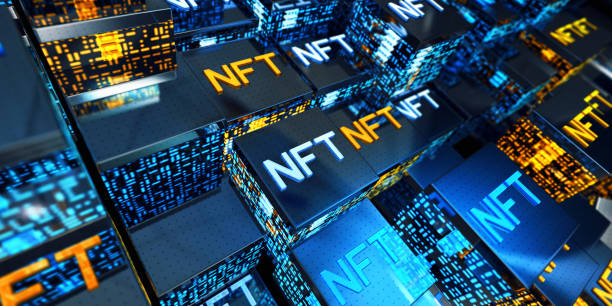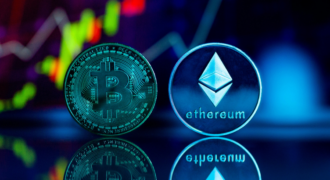
What Are NFTs?
At their core, NFTs are digital assets that represent ownership of a unique item or piece of content, verified on the blockchain. Unlike traditional cryptocurrencies such as Bitcoin or Ethereum, which are interchangeable and share the same value (fungible), NFTs are non-fungible, meaning each one is distinct and holds its own value.
NFTs can represent a wide variety of assets, including:
- Digital Art: One of the most popular uses for NFTs, allowing artists to sell their work directly to collectors.
- Music & Videos: Musicians and creators are turning to NFTs to monetize their content in new ways.
- Collectibles: Virtual trading cards, memorabilia, and other digital collectibles are tokenized as NFTs.
- Virtual Goods: In video games and virtual worlds, NFTs can represent in-game items, skins, and assets that players can buy, sell, and trade.
- Real-World Assets: NFTs are also being used to represent ownership of physical assets, from real estate to luxury goods.
The blockchain ensures that each NFT is one-of-a-kind, with an immutable record of ownership. This gives creators and collectors a way to prove ownership and authenticity in the digital realm.
How Do NFTs Work?
NFTs are minted (created) on blockchain networks like Ethereum, Binance Smart Chain, and Solana. When an NFT is minted, it is assigned a unique ID and recorded on the blockchain. This ID links the NFT to its creator and proves its authenticity.
Most NFTs are built using smart contracts, which are self-executing contracts that are programmed to perform specific actions once certain conditions are met. These contracts can include royalties for creators, ensuring they earn a percentage every time their NFT is resold.
What Is the Metaverse?
The Metaverse is often described as a fully immersive, persistent, and interconnected digital universe where people can interact, socialize, create, and transact in real-time. Think of it as the next generation of the internet, blending virtual reality (VR), augmented reality (AR), and blockchain technology into a shared virtual space.
In the Metaverse, users will be able to:
- Socialize: Meet and interact with others in virtual environments using avatars.
- Create: Build virtual spaces, artwork, games, and even entire digital worlds.
- Work: Attend meetings, collaborate on projects, or even host virtual offices.
- Play: Engage in games, attend concerts, or participate in virtual events.
The Metaverse is being built by a range of companies and communities, with platforms like Decentraland, The Sandbox, Somnium Space, and Axie Infinity paving the way for this new digital reality.
Key Elements of the Metaverse:
Virtual Real Estate: Just like in the physical world, virtual land in the Metaverse has become a commodity. Users can buy, sell, and develop parcels of digital land on platforms like Decentraland or The Sandbox, creating virtual cities, stores, or even art galleries.
Avatars: In the Metaverse, your avatar represents you. These avatars are customizable digital representations that interact with others in virtual worlds. Avatars can be tied to NFTs, with each avatar or item of clothing being a unique digital asset.
Digital Economy: The Metaverse will have its own economic systems, often powered by cryptocurrencies and NFTs. Users can purchase goods, land, and services using digital currencies, and creators can sell NFTs to monetize their work in virtual spaces.
Interoperability: One of the key promises of the Metaverse is the ability for digital assets (including NFTs) to be used across different platforms. For example, an avatar you buy in one virtual world might be used in another, or an in-game item from one game might be transferred to another game, thanks to NFTs.
How NFTs and the Metaverse Are Interconnected
The connection between NFTs and the Metaverse is where things get really interesting. NFTs are essential building blocks of the Metaverse. Here’s how they work together:
Digital Ownership in Virtual Worlds: In the Metaverse, NFTs are used to represent ownership of digital assets. This can include virtual land, rare in-game items, clothing, or even virtual art galleries. When you buy an NFT in the Metaverse, you are purchasing a piece of that virtual world’s economy.
Play-to-Earn (P2E) Models: Many games in the Metaverse are adopting play-to-earn models, where players can earn real-world money by playing the game. NFTs are used to represent in-game assets such as characters, skins, weapons, or property. These NFTs can then be sold or traded, creating a secondary market within the game itself.
Interoperability and Cross-Platform Use: NFTs allow for interoperability between different virtual worlds. For instance, an NFT representing a piece of virtual clothing in one game can be used as an item in another. This is creating a more fluid experience across the Metaverse, allowing users to take their digital identities and assets wherever they go.
Social Interaction and Expression: In the Metaverse, NFTs can also represent social identity—whether it’s through unique avatars, digital art displays, or limited-edition collectibles. Your NFT collection can reflect your digital persona, and platforms like Instagram, Twitter, and Discord are already starting to integrate NFTs to showcase profiles and achievements.
The Future of NFTs and the Metaverse
The potential of NFTs and the Metaverse is only just beginning to unfold. Here are some trends and possibilities to watch for in the coming years:
Widespread Adoption: As more industries—from fashion to real estate to entertainment—embrace NFTs and virtual worlds, the Metaverse will become an increasingly important part of daily life. Major companies, including Meta (formerly Facebook), Microsoft, and Nike, are already investing heavily in the Metaverse.
Enhanced User Experiences: Virtual reality (VR) and augmented reality (AR) technologies are expected to become more integrated into the Metaverse, making the experience more immersive and engaging. As VR headsets become more affordable and accessible, the way people interact with digital worlds will change drastically.
Sustainability: One of the biggest challenges facing the NFT and Metaverse ecosystems is sustainability. Concerns about the environmental impact of blockchain technology have led to innovations like Ethereum 2.0, which will offer energy-efficient solutions for minting and transacting NFTs.
New Forms of Digital Content: The creative possibilities in the Metaverse are endless. Artists, game developers, and content creators will continue to explore new ways to use NFTs to generate revenue, whether through virtual performances, digital fashion, or virtual goods.
Conclusion: Embrace the Future of Digital Interaction
NFTs and the Metaverse are not just passing trends—they are revolutionizing how we interact with digital content, assets, and each other. From unique digital art to virtual economies, these technologies are offering new ways to create, own, and experience digital assets. As the Metaverse grows and evolves, NFTs will play a pivotal role in enabling true digital ownership and cross-platform interaction.
Whether you’re a creator, collector, gamer, or simply someone curious about the future of the internet, now is the perfect time to start exploring NFTs and the Metaverse. The possibilities are endless, and the next big digital revolution is just around the corner.
.






